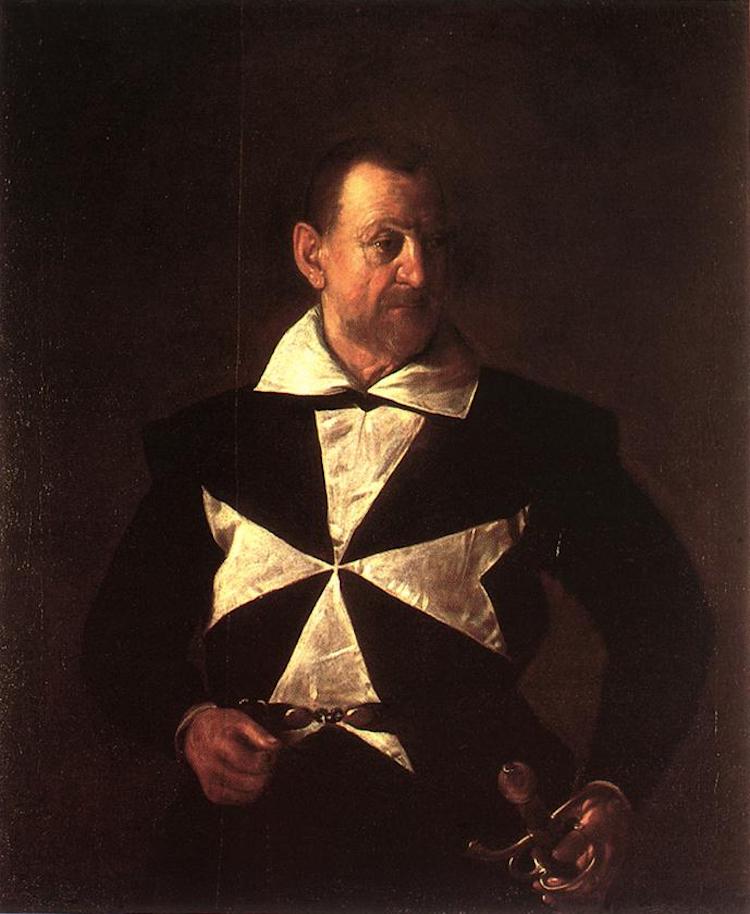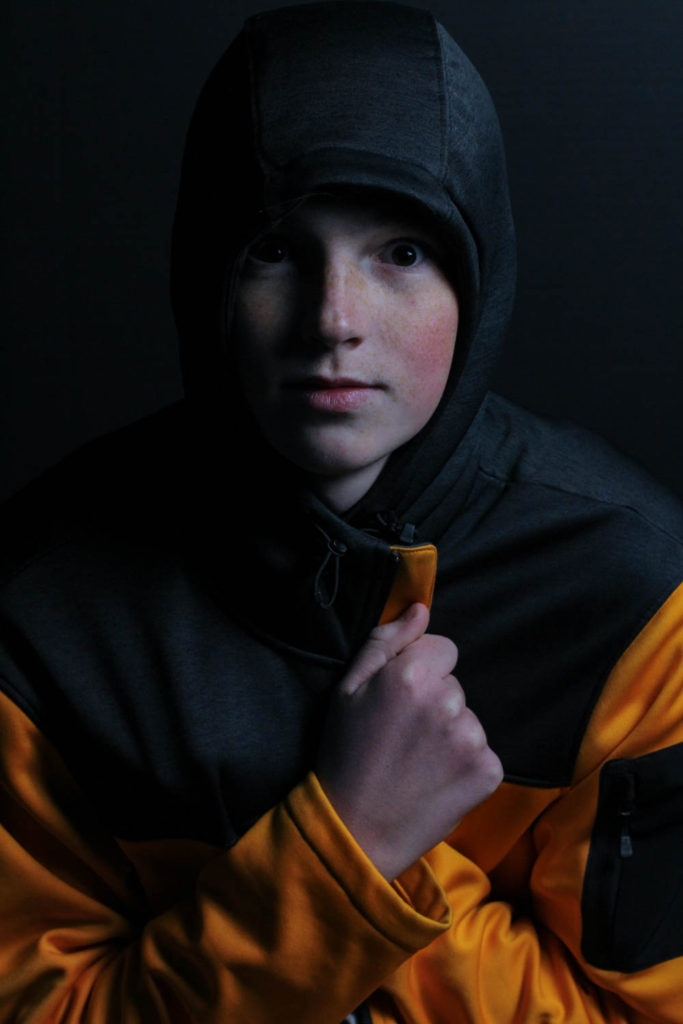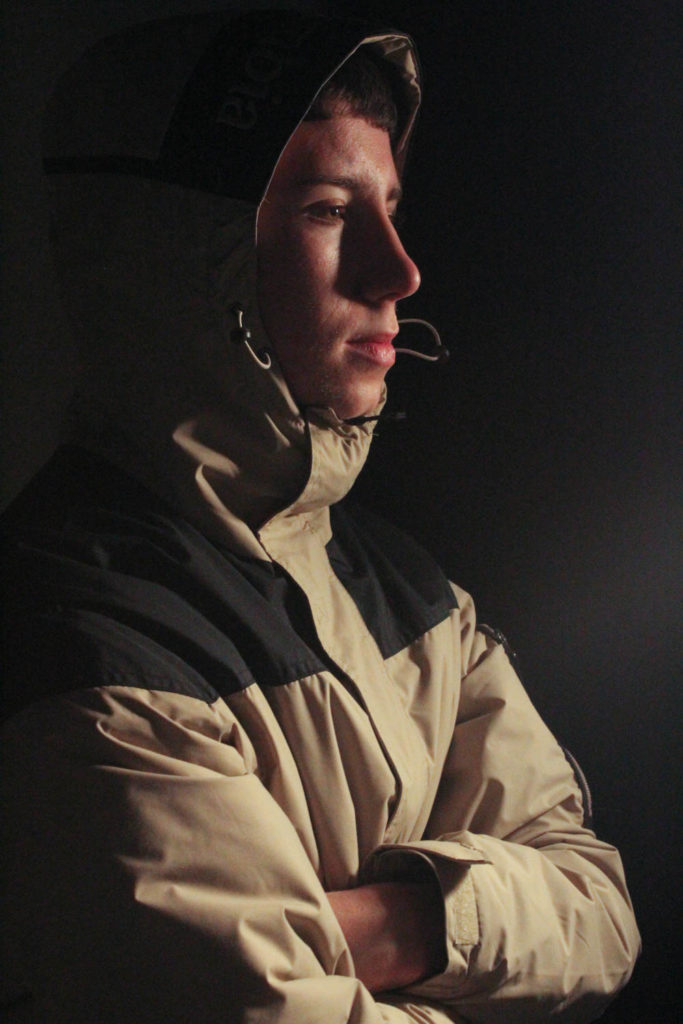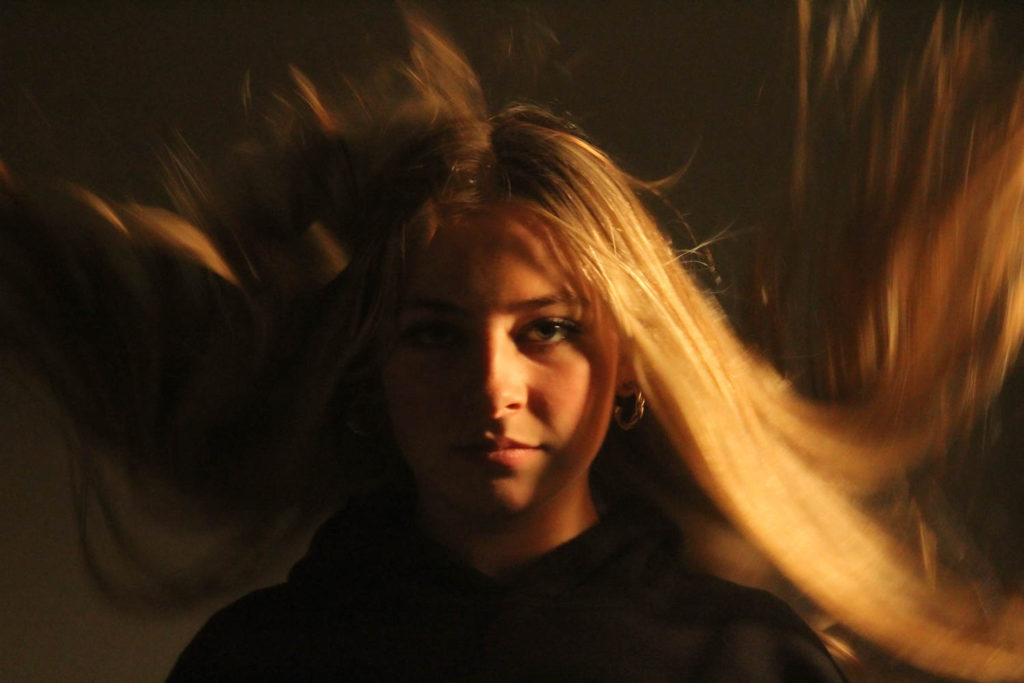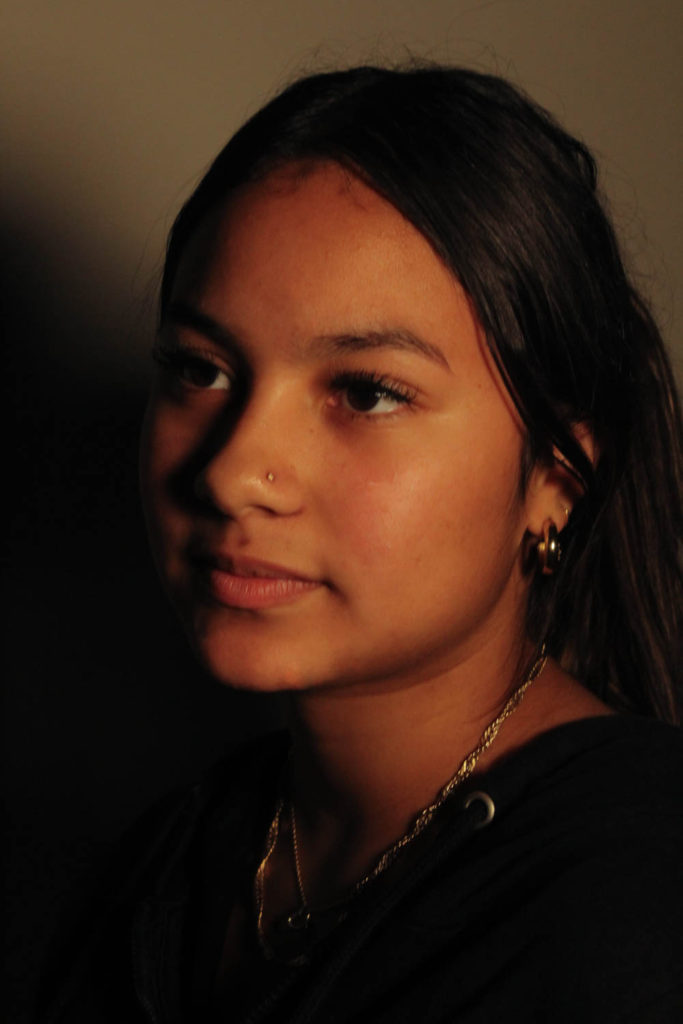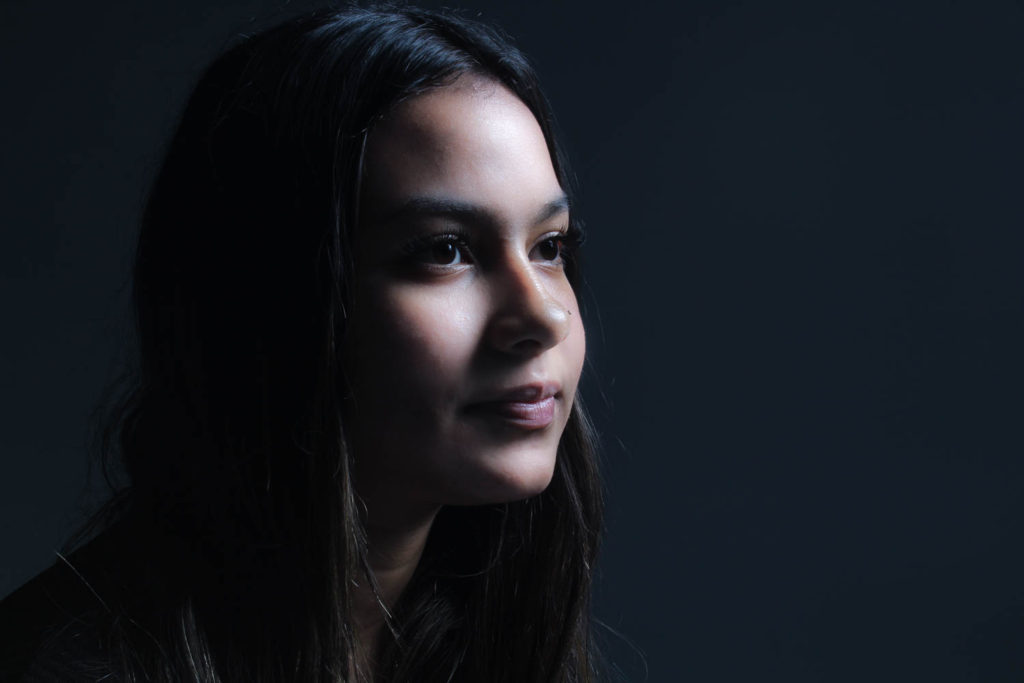Rembrandt lighting –
lighting positioned to the side of the face but slightly in front so that there is a little triangle under one side of the persons eye.
The term Rembrandt lighting is relatively new. Originally, it was coined by 20th century filmmaker, Cecile B.DeMille, when he produced a film called, Warrens of Virginia. As the story goes, he borrowed some spot lights to recreate a lighting scheme that had the actors’ faces half lit. Rembrandt lighting actually precedes the Dutch artist Rembrandt van Rijn, who it is named after. The Italians were the first to experiment with various lighting schemes in the 1500s. As art emerged from the Gothic period, the Renaissance artists brought perspective and lighting to painting.

Butterfly lighting
Butterfly lighting is a lighting pattern used in portrait photography where the key light is placed above and pointing down on the subject’s face. This creates a dramatic shadow under the nose and chin that looks like a butterfly. It’s also called ‘Paramount lighting,’ named for the Hollywood studio and how they lit their most glamorous and beautiful actresses.
Butterfly lighting dates back to some of the earliest glamour shots. Specifically, Marlene Dietrich, a German silent film actress, who became a Hollywood star in the 1930s, was presented on film in a way that gave this look its name.She came to California with director Josef von Sternberg, who lit her in his films with what is known today as butterfly lighting. He would position the key light above her, where a butterfly-shaped shadow would appear just below her nose. With this lighting, her cheekbones and facial structure became more prominent. It soon became a Hollywood-must for lighting.
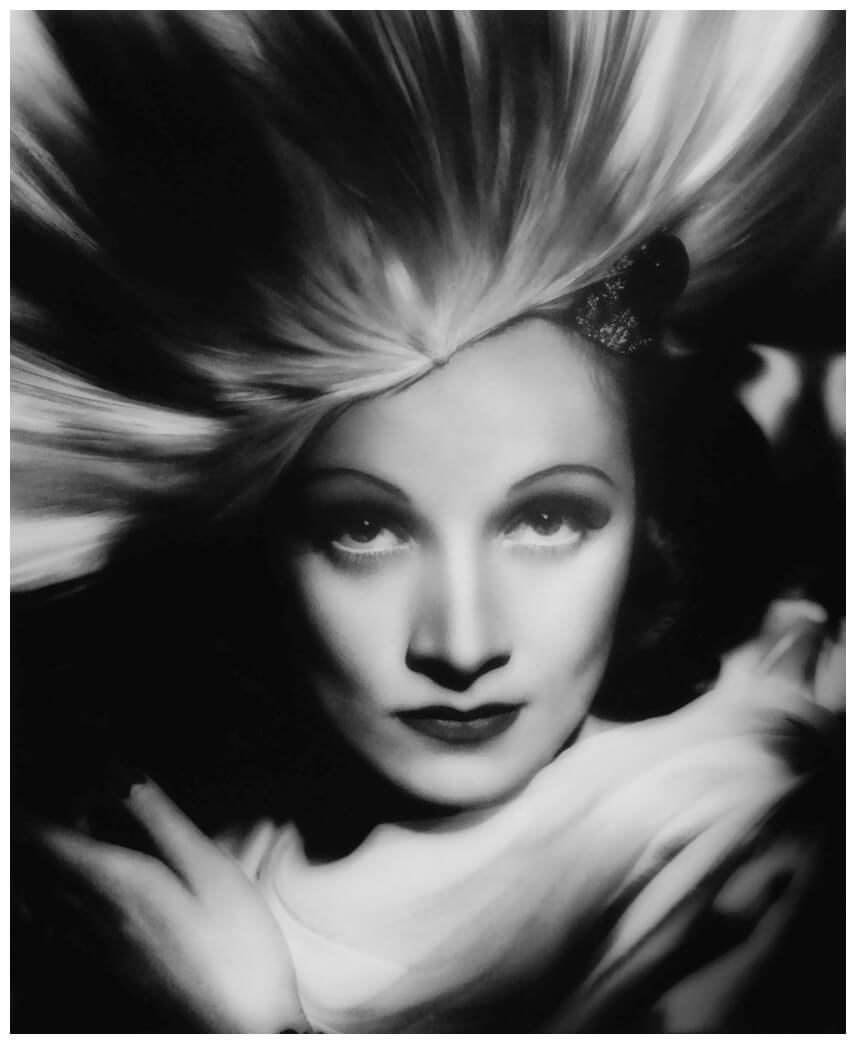
side lighting – Artists such as Rembrandt and Caravaggio painted using the chiaroscuro technique, which is a method that uses shadows and a single light source to create depth and drama. Still life scenes, for instance, were painted in dark rooms lit by a single window while faces in portraits were illuminated with a golden, candle-lit glow.
